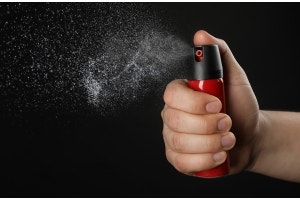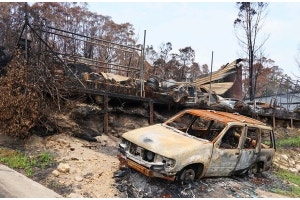
MIRA Safety VK-530 Filter Cartridge FAQ
Welcome to the MIRA VK 530 Filter FAQ Page! Here, we address the common inquiries surrounding our advanced VK 530 filter, designed to ensure your safety and comfort in various environments.
Information is correct as at 14.11.2023 and may be subject to change without further notice
1. Does this filter contain any asbestos?
No, it does not.
2. What happens if I use a filter beyond the specified shelf life? I know that it is not recommended, but is it a real hazard to life?
For safety reasons, it is advisable to strictly follow the recommended shelf life of the filter. Activated carbon naturally degrades over time. The assurance is provided that as long as all conditions, such as proper storage, are adhered to, the specifications outlined for the filters will remain accurate until the end of their shelf life. However, beyond the specified shelf life, there is no assurance of continued effectiveness.
3. Viruses can only survive on surfaces for a period of a few days maximum. So if the only concern is only viruses like the coronavirus (and I don't have to worry at all about exposure to chemicals, etc.), why is it that gas mask filters cannot be reused after a few days, when any viruses that were on/in it will no longer be a danger?
For safety considerations, it is not advisable to endorse the reuse of any filter. This contravenes established safety standards mandated by regulatory agencies worldwide for disposable filters. If there is a determination to reuse a filter in the context of COVID-19, it is recommended to consult the guidelines provided by the CDC. Given the evolving nature of information related to the virus, it is advisable to regularly check their updates for guidance on the appropriate duration for quarantining an exposed filter before considering reuse.
4. Will these work with the MIRA Safety CM-6M Tactical Gas Mask - Full-Face Respirator for CBRN Defense?
Yes, they will, as both are 40mm NATO threaded.
5. Once opened and in use, how long does this filter last before needing to be replaced?
The duration of effectiveness hinges on several variables, encompassing the type of contaminant, its concentration, the rate of breathing, and prevailing atmospheric conditions. In the case of carbon monoxide (CO) conversion, this filter has been certified for a 15-minute duration at a concentration of 5000 parts per million (ppm), aligning with the established standard for smoke escape filters.
6. How does the NBC-77 SOF compare to VK-530? In terms of protection from smoke due to bushfires?
Both filters are designed to effectively filter smoke particles and specific gases/vapours generated during combustion. Notably, the VK-530 includes an oxidising agent capable of converting carbon monoxide (CO) into carbon dioxide (CO₂), enabling safe exhalation. Testing has confirmed its ability to convert CO for a duration of 15 minutes at a concentration of 5000 parts per million (ppm).
7. In a few other answers, it was mentioned that these will fit the new GOST standard. Will these filters work on the Bayonet to GOST converter on the PMK-2. If not, will they work on the PMK-4,3 or S?
These filters are compatible with any mask featuring a 40mm NATO threaded connection or a NATO threaded converter. The compatibility with your converter hinges on whether it adheres to the EN 148 thread standard. If it does, it should function seamlessly with these filters.
8. Can VK-530 filters work with GOST thread masks?
These filters are threaded for 40mm NATO, so they cannot be threaded onto old-style 40mm GOST masks. They can, however, be used with masks that fit the new GOST standard which is 40mm x 3.5mm, same as 40mm NATO.
9. Are these filters permitted to fly on airlines?
The permissibility varies depending on your travel destination. Each country enforces distinct regulations governing the importation of goods. According to regulations in the United States, travellers are permitted to carry personal protective equipment for personal use during their journey.
10. How long are the filters effective once opened and installed on a mask?
The duration of filter usage is dependent on various factors such as atmospheric conditions, contaminant type, concentration, and individual breathing rate. As a general recommendation, it is advisable to have 2 filters per person per day for emergency evacuation scenarios.
11. I am aware that a P3 filter is required to block the coronavirus. Which one of your filters is P3?
MIRA Safety filters, including NBC-77 SOF, VK-530, and DOTpro 320, fall under the category of "combined filters," featuring both a P3 particle filter and activated carbon. The P3 designation indicates a particle filter with a capacity to block 99.9999% or more of particulates. Given that viruses are transmitted through liquid aerosols and particulates, using this filter in conjunction with a full-face respirator would effectively guard against the entry of the coronavirus into the respiratory passages and eyes.
12. If I combine the MIRA VK-530 with the NBC-77 SOF filter (one on each side), would I get the benefits of both?
It is advised to wear a single filter at a time for enhanced comfort and reduced weight on the face. Opting to wear 2 filters concurrently would result in the filtration level being equivalent to that of the filter with the lower efficiency. Specifically, in the instance of the NBC-77 SOF and VK-530 combination, since the NBC-77 SOF lacks the ability to oxidise carbon monoxide (CO), utilising this combination would still permit CO to enter the respiratory system.








